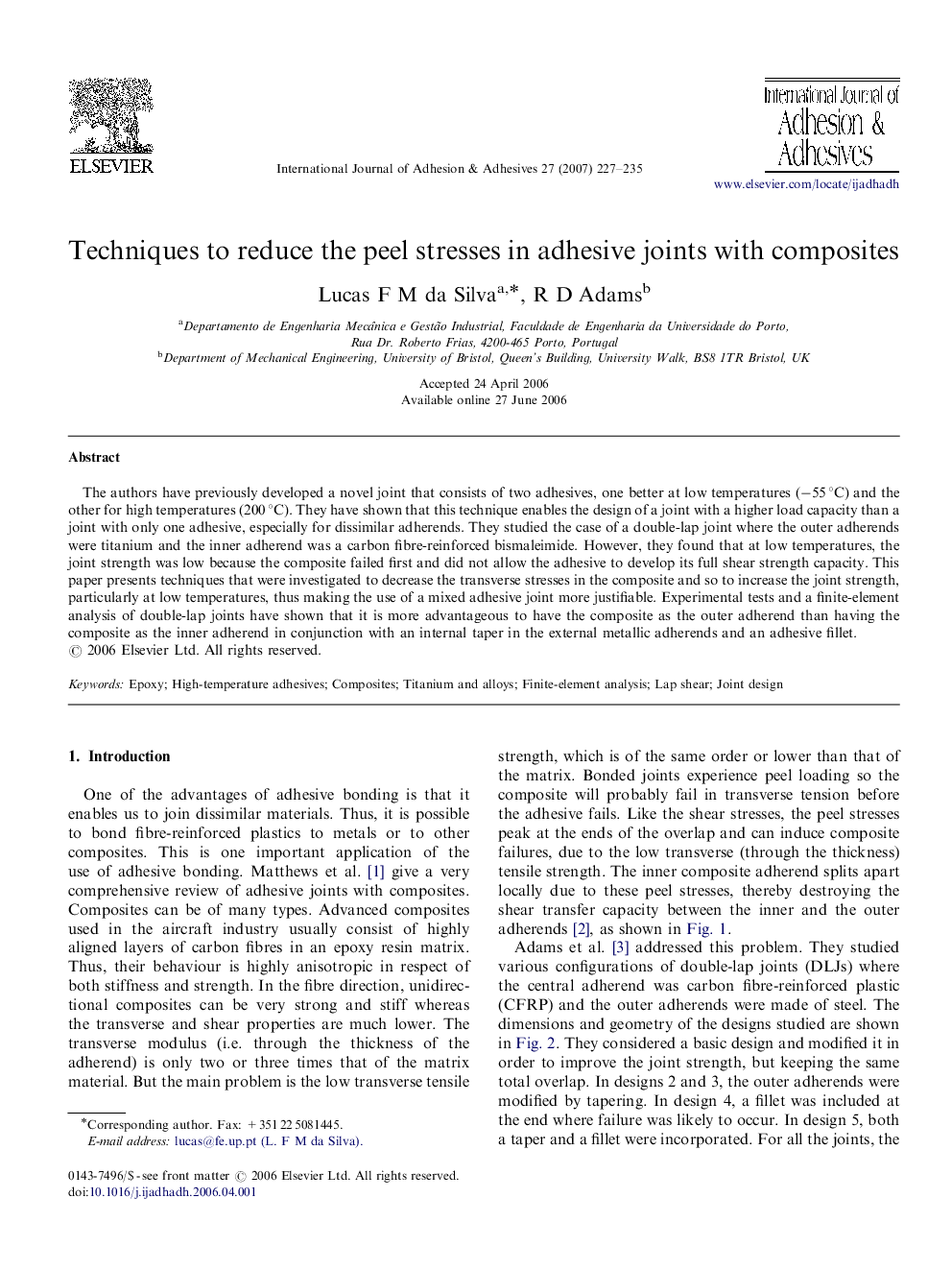| Article ID | Journal | Published Year | Pages | File Type |
|---|---|---|---|---|
| 777546 | International Journal of Adhesion and Adhesives | 2007 | 9 Pages |
The authors have previously developed a novel joint that consists of two adhesives, one better at low temperatures (−55 °C) and the other for high temperatures (200 °C). They have shown that this technique enables the design of a joint with a higher load capacity than a joint with only one adhesive, especially for dissimilar adherends. They studied the case of a double-lap joint where the outer adherends were titanium and the inner adherend was a carbon fibre-reinforced bismaleimide. However, they found that at low temperatures, the joint strength was low because the composite failed first and did not allow the adhesive to develop its full shear strength capacity. This paper presents techniques that were investigated to decrease the transverse stresses in the composite and so to increase the joint strength, particularly at low temperatures, thus making the use of a mixed adhesive joint more justifiable. Experimental tests and a finite-element analysis of double-lap joints have shown that it is more advantageous to have the composite as the outer adherend than having the composite as the inner adherend in conjunction with an internal taper in the external metallic adherends and an adhesive fillet.
